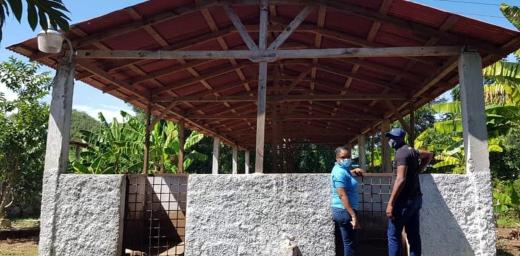10 years after the earthquake: A project visit to the LWF model village in Haiti
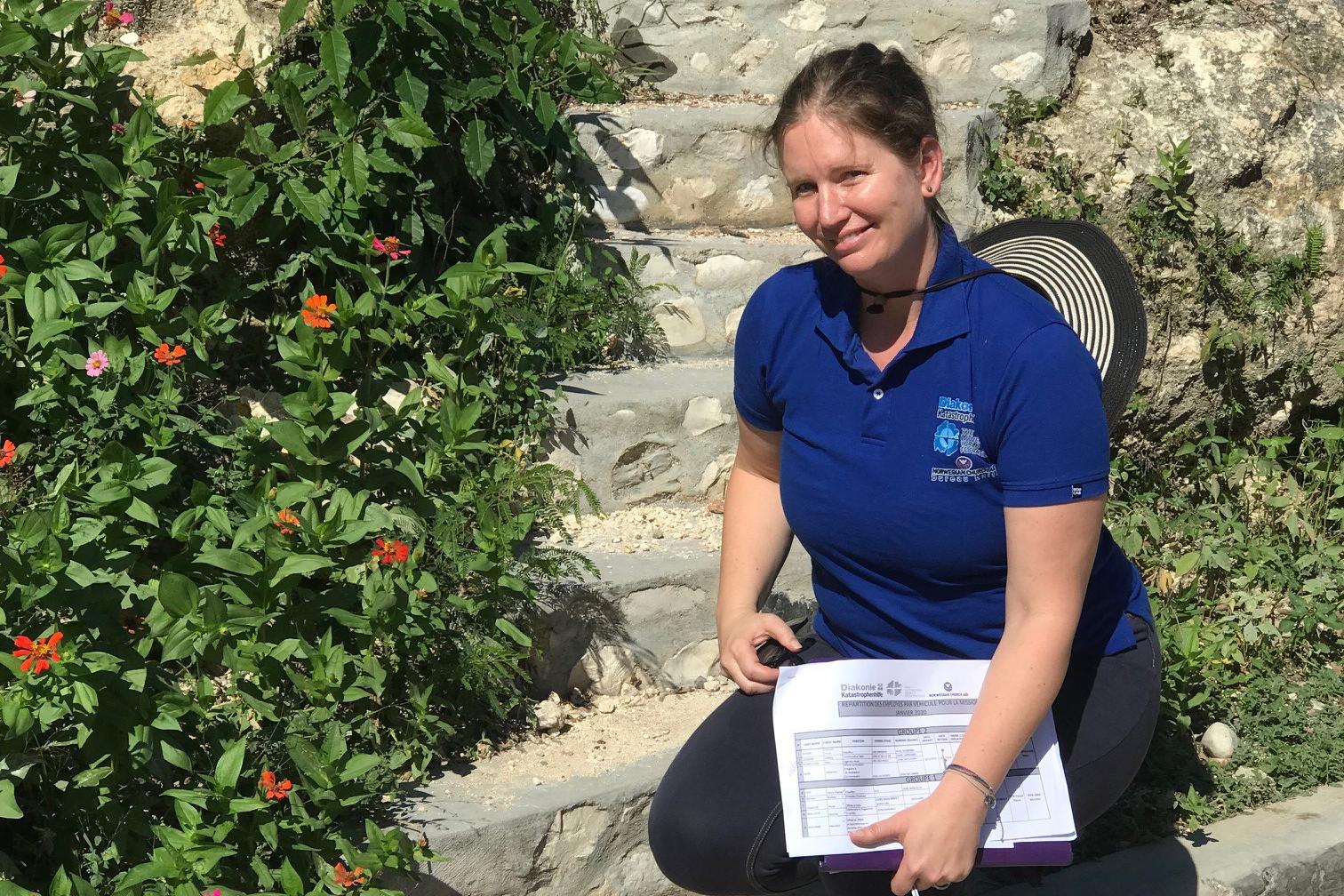
Starry Sprenkle, LWF Country Representative for the Program office in haiti, in Gressier Model Village. Photo: LWF/ Haiti
Our first stop was the Model Village, on a hilltop above the town of Gressier, approximately one hour to the West of Port-au-Prince. The Gressier Model Village is composed of 150 single family homes, an office, and a community area.
It’s construction from 2011-2014 cost approximately 4 million EUR. The donations came primarily from churches who donated to the ACT appeal. The original inhabitants were chosen by LWF staff from earthquake-impacted families, who at the time were living in tents in Gressier. The people needed to be interested in taking part in a ‘model village’ residential development, with cooperative management of water, electricity, and wastes, and economic solidarity initiatives for the residents. They also had to be willing and able to make a small investment to support the house construction.
A model village
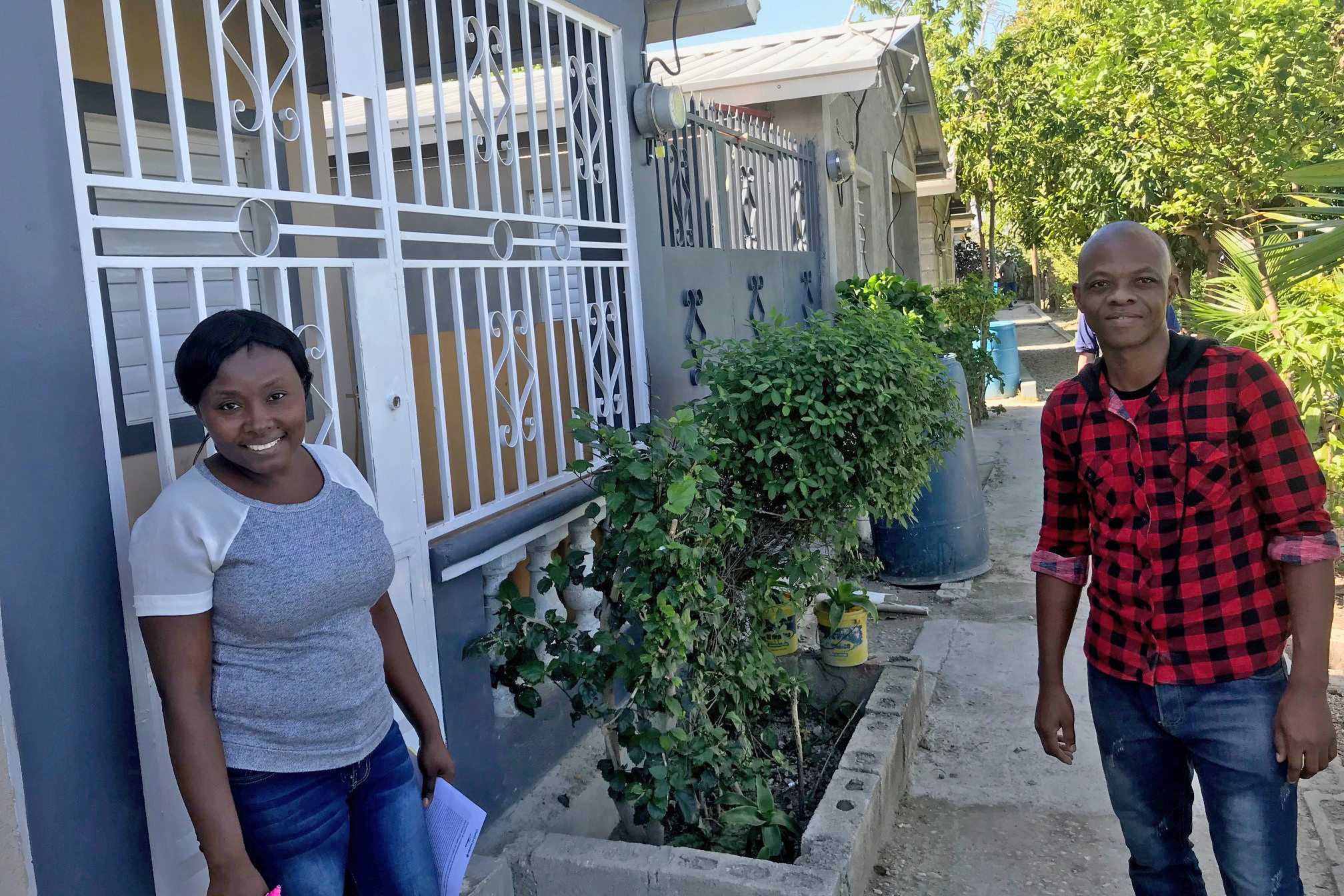
Inhabitants of the model village. Photo: LWF/S.Sprenkle
Ten years later, the village is fully occupied, and very well kept.
It is hard to believe that when the village was first completed, in 2013, it was a barren hilltop. The design of the village included many trees, which now, ten years later, provide shade and bank stabilization. Palms, Australian Pines, Haitian Oak and Mahogany and other trees shade the houses, and the residents seem to be in a gardening competition, with potted plants in beautiful pots gracing nearly every one of the tiny front porches.
The good maintenance of the village is in large part due to the community principles established at the beginning, and the continued efforts of the homeowners association, whom LWF established and trained to maintain the village into the future, without the intervention of LWF, a critical step for the overall sustainability of the work.
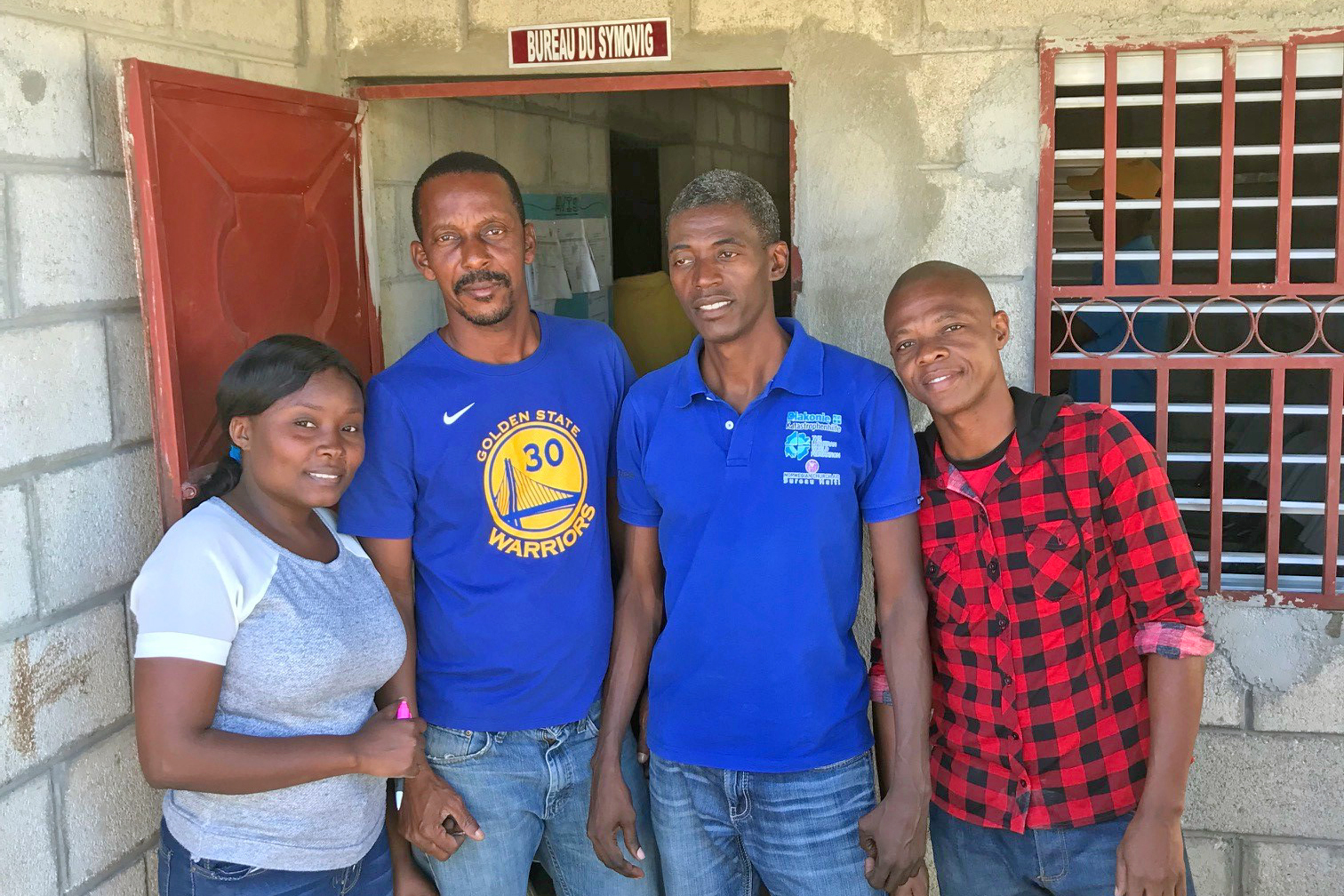
Members of the model village home owners association, SYMOVIG. Photo: LWF/ S. Sprenkle
The village is largely self-sufficient. Houses and streets have solar lighting systems. A large water tank above the village provides gravity-fed water to the plumbing systems, which is filled with water pumped up from a well at the bottom of the hill. The system is still functioning well, the main challenge is collecting money from the inhabitants to buy the fuel for the pump.
Engineer solidarity and trust
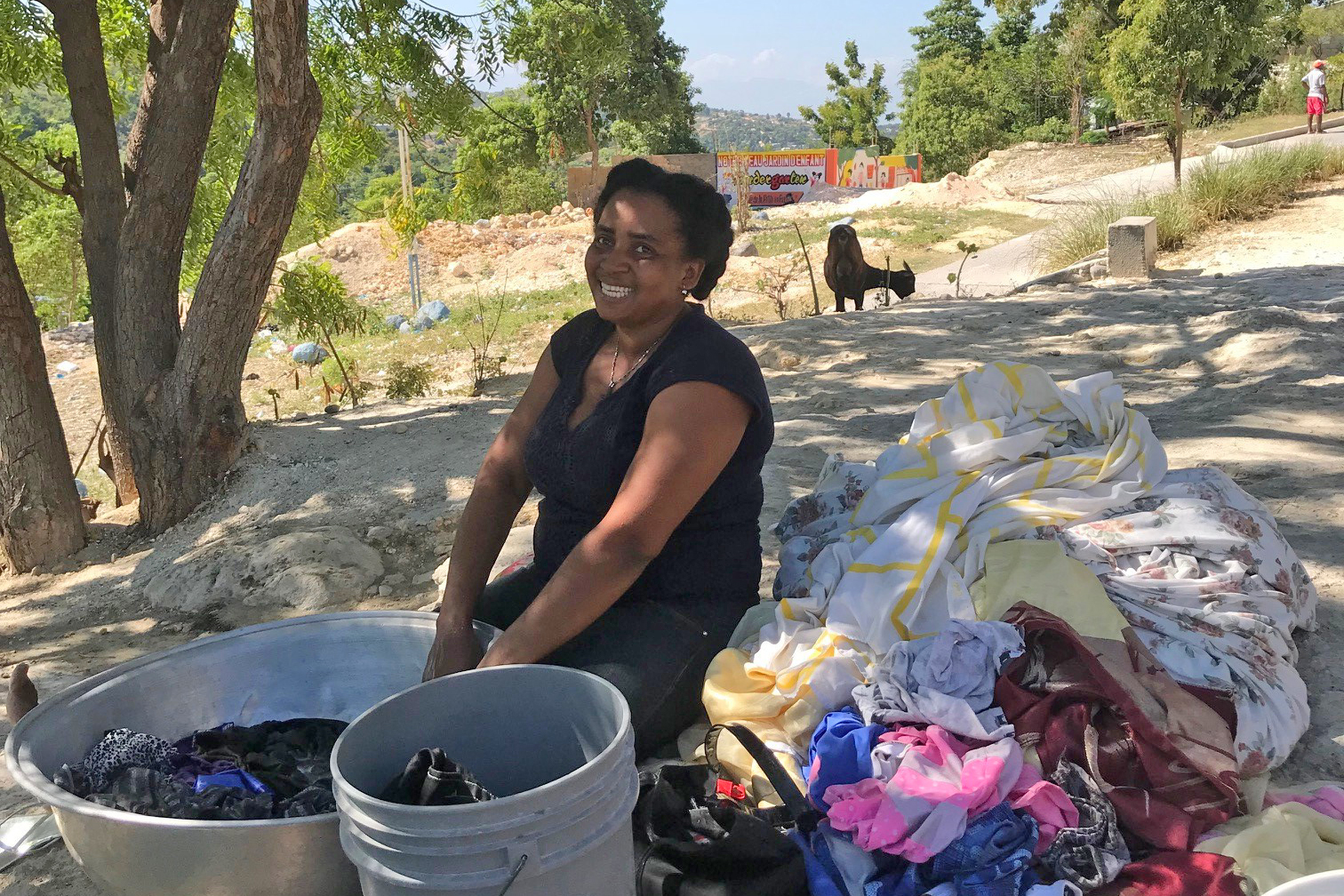
Nadine Joseph, who started a new life after the earthquake in Gressier. Photo: LWF/ S. Sprenkle
The village is safe, and yet it is not a gated community. The houses don’t have iron bars on windows or doors, which you would typically see in an urban area. This was another intentional part of the model village design, to foster solidarity and trust as cornerstones of rural Haitian life.
It is a weekday, many houses are empty, but obviously inhabited and well kept, with curtains at windows and plants on porches. Small groups of people sit on the front porches of some of the houses, greeting us as we walk past. A woman is washing laundry in a big wash basin on the sidewalk, using clear water drawn from the community’s pipes. Her name is Nadine Joseph, her family moved to the village three years ago to get away from the noise and dust of central Gressier.
“When there were problems down by the main road, it was still peaceful and calm here, that is why I’m happy to be here” she says, referring to the political unrest of 2018/2019. She appreciates the cool breeze as she washes her family’s clothes in the shade of a Neem tree planted along the top of the road embankment. Her three children were at school, she said, and her husband was working in Port-au-Prince all week.
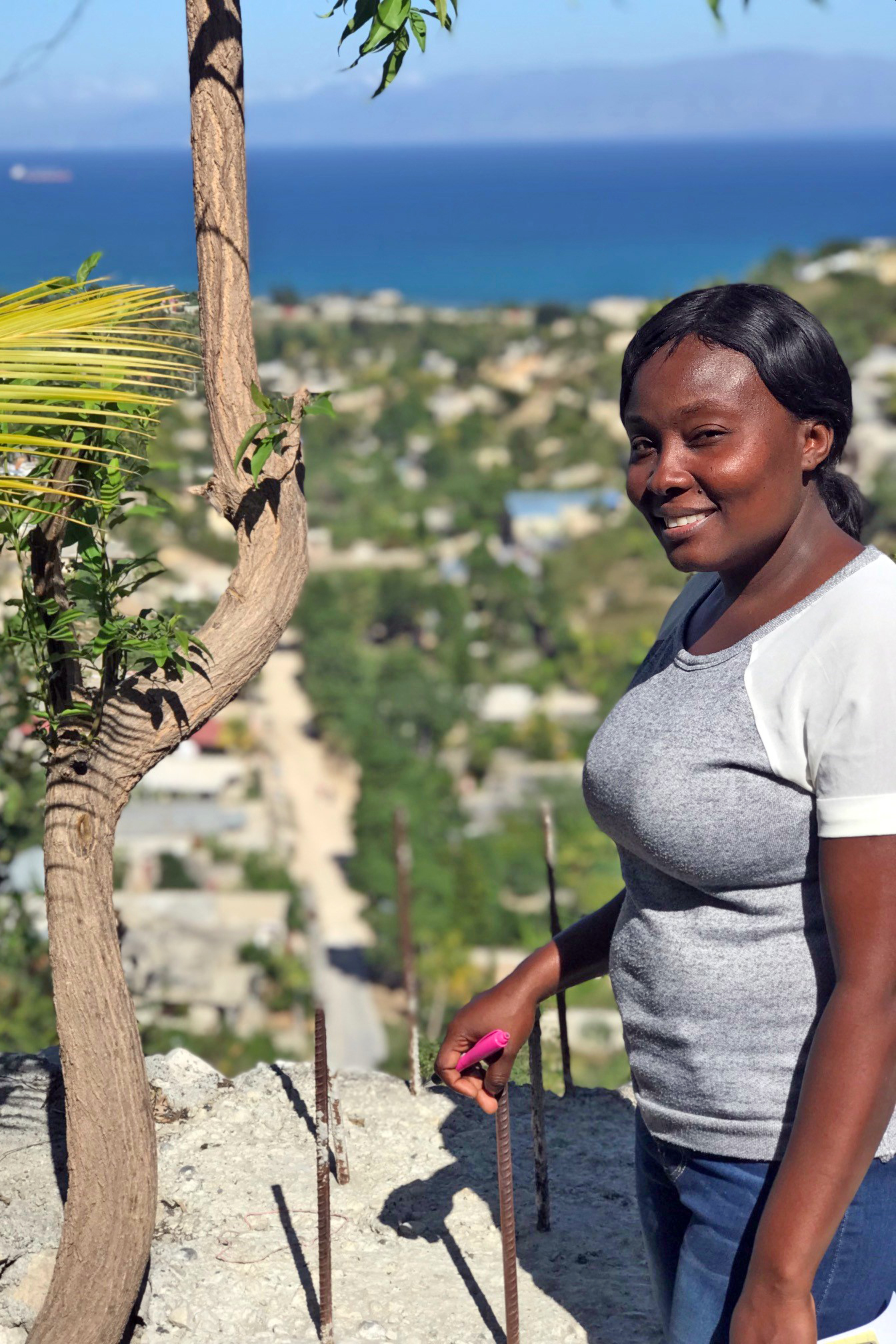
Many trees and bushes now grow on the once barren hill. Photo: LWF/ S. Sprenkle
We leave the village both grateful and full of pride, and with a commitment to the continuing development of this small community. It is an example of the type of self-driven and self-managed development that we all want for Haiti.
Second stop: Leogane
The caravan continues west to the next city of Leogane, to visit a community school rebuilt after the earthquake, and a water distribution system that supplies the school and the surrounding community of Deslandes with clean water.
The water distribution points transport clean water closer to people’s homes, in places where there is no piped water distribution. The Haitian Government doesn’t have the means to serve the entire population, so we assist with that. Of course, we do so in close collaboration with, and in the name of, the local water authorities. Since the local authorities lack the budget even for maintenance, the CAEPA have to ask the population to contribute for their water, to be able to maintain the system.
Temporary becomes permanent
We walk 10 minutes back down the dirt road to the Community School of Deslandes, a solid concrete building with solar panels on its roof and a large inner courtyard filled with gravel. The permanent school was built by NCA and FCA, but we find that even the temporary school structures provided by LWF, 175 schools with walls made of plywood on a solid concrete foundation while the ‘permanent’ construction was in progress, are still in use.
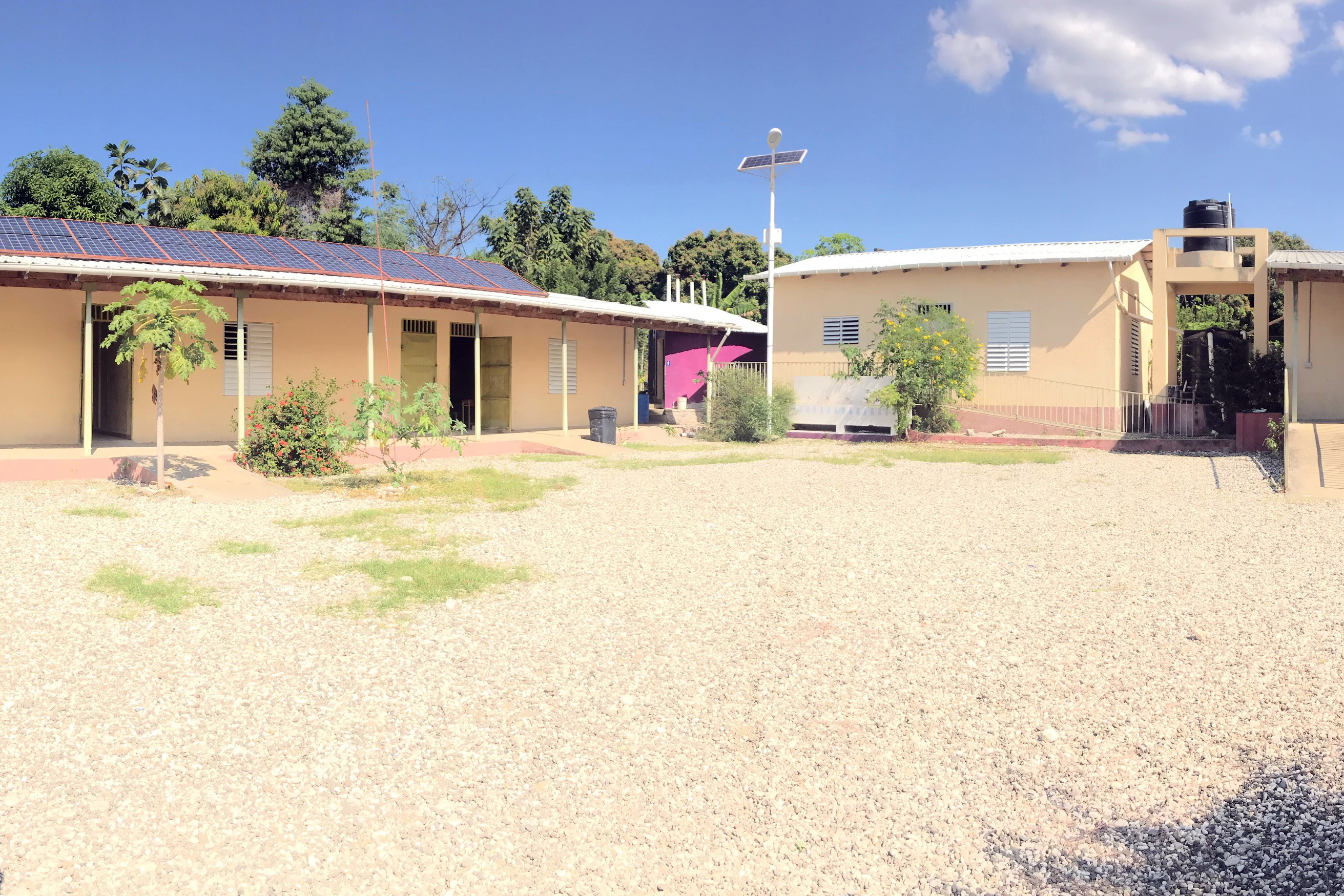
One of the schools in Deslandes. Photo: LWF/ S. Sprenkle
Eventually the community will need to replace or upgrade the plywood walls, to keep the schools functional. This is a phenomenon which we see all throughout Haiti: “temporary” shelters are becoming permanent, as the demand for buildings exceeds the number of new constructions. It becomes more evident why even temporary structures need to be built with proper engineering principles.
We inspect the school’s WASH system, with running water faucets for handwashing, and separate toilet blocks for girls and boys, something that is very important for protection in Haiti. The sewage system was built with a biodigester, which turns sewage into cooking gas.
The CAEPA members tell us how proud they are, as a community, to have such a modern school for their children. They comment on the running water and toilets, which allow their children to practice good hygiene and stay healthy. Their next goal for their community development is a hospital.
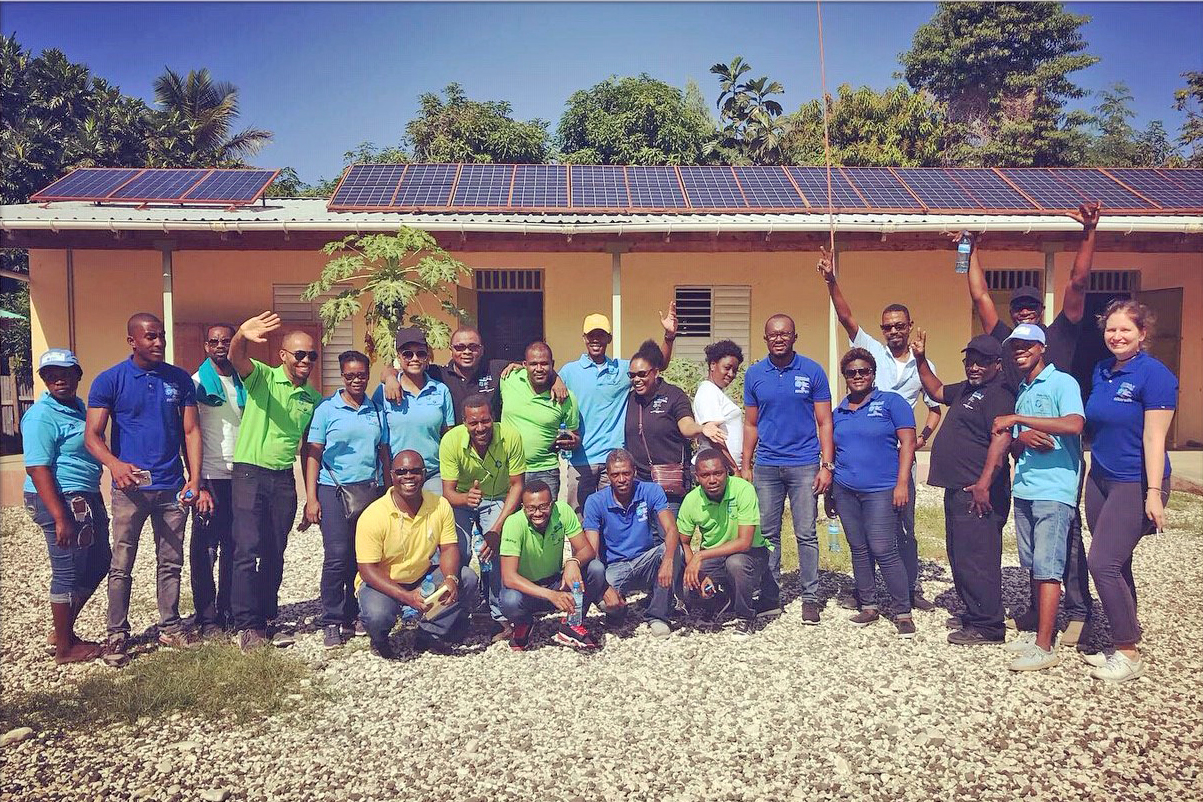
Visitors in front of the school, which was built with help of Norwegian Church Aid and FinnChurch Aid. Photo: LWF/ S. Sprenkle
We returned to Port-au-Prince safely, happy to have the chance to reconnect to our work after many months of limited movement due to the security situation. The political violence is particularly bad in the capital, and the urban population has much more problems than the rural populations. It is both strange and inspiring to see how life continues more or less the same in the areas outside of Port-au-Prince, and this gives us renewed hope for the future of Haiti, which requires continual commitments and contributions from all parties involved.
Starry Sprenkle Hyppolite, Country Director for the Joint Office of the Lutheran World Federation, Diakonie Katastrophenhilfe and Norwegian Church Aid (DKH/LWF/NCA) in Haiti.


